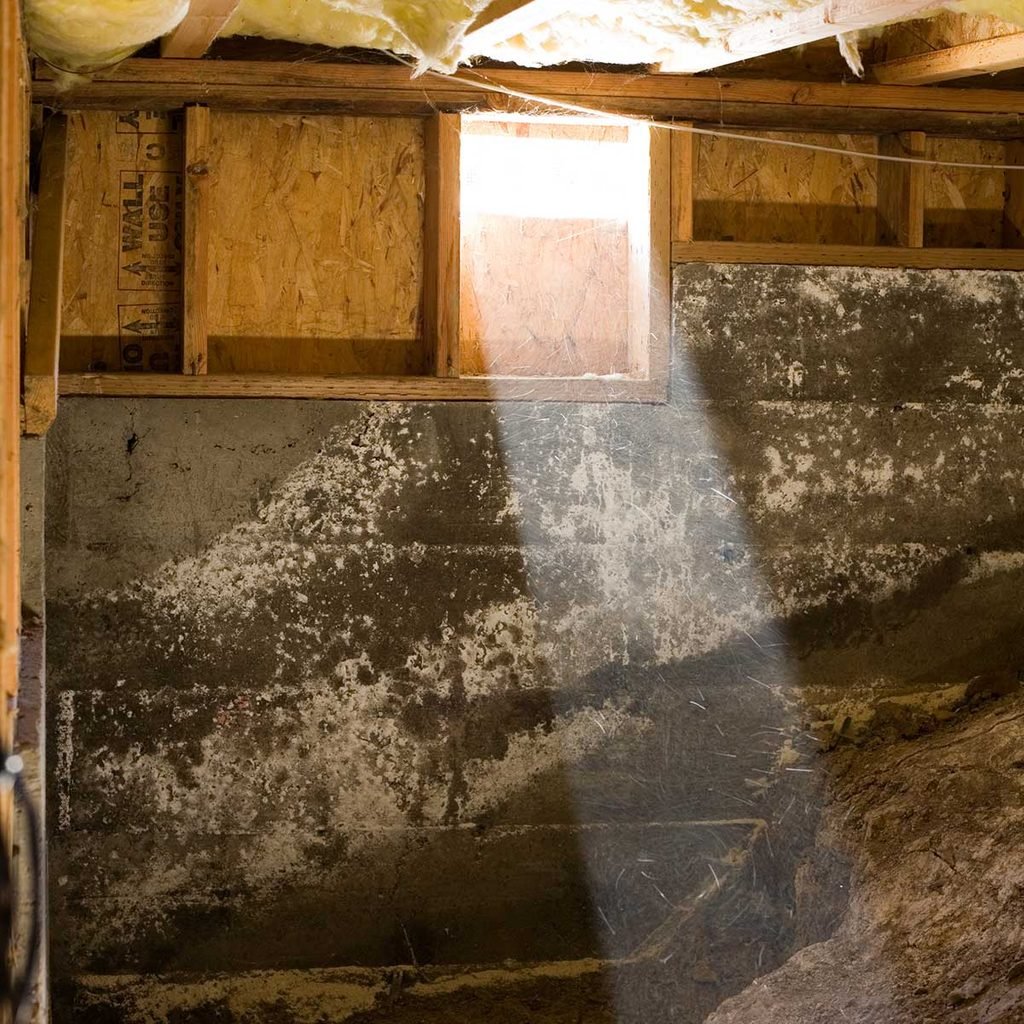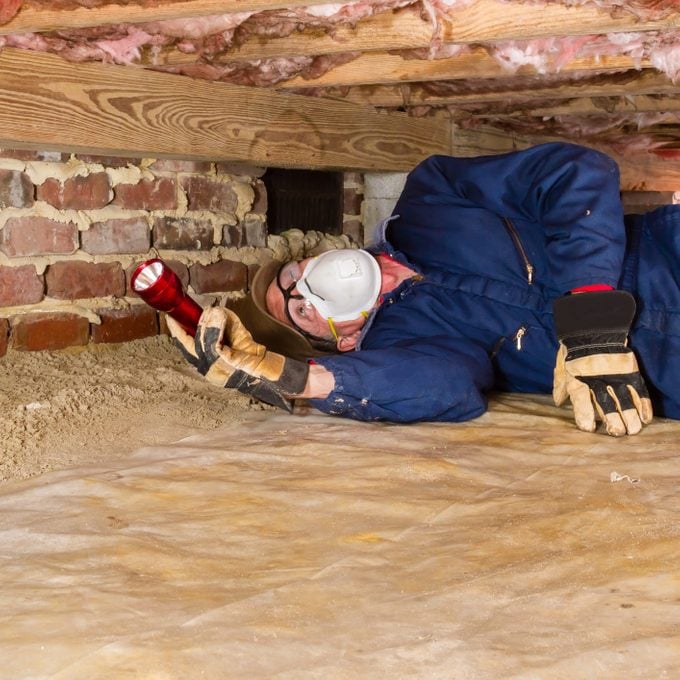What You Need to Know About a Home’s Crawlspace
Updated: Apr. 28, 2023

The crawlspace is often an out-of-sight, out-of-mind part of a home. But there are important things to know, including how to utilize that space.
A crawlspace is the narrow area between the ground and the first floor of a home. It is typically unfinished, with a dirt floor. In some cases it can be as narrow as 2-ft. x 2-ft., just enough room to crawl around inside — hence the name. About 15 percent of homes have a crawlspace, which is often an access point for electrical, plumbing and ventilation within the home.
On This Page
What Is the Purpose of a Crawlspace?
A crawlspace provides support for the living areas above, and a buffer between the house and the ground below. A crawlspace is typically vented to the outside or an adjoining basement. This ventilation allows air to circulate below the house, explains Scott Fisher, contractor and owner of Ciel Power, LLC.
“When a crawlspace is vented to an adjoining basement, it can have a desirable effect on the living areas above, particularly during colder winter months,” Fisher says. “The warm air produced by the home’s heating system can assist in warming both the crawlspace and the living areas above.”
How Can You Use the Space in a Crawlspace?
Crawlspaces are frequently used to run piping, duct work and wiring through the house, and a large enough crawlspace can be used to install an HVAC unit. The unrestricted space makes it easy to access and make repairs.
Many homeowners also like to use the space for storage, though one should consider the moisture and environment first. Unfinished crawlspaces are good for storing construction materials like bricks, tiles, piping or anything that won’t be damaged by moisture. Ventilation is a key factor in optimizing a crawlspace.
Says Fisher: “A properly encapsulated crawlspace, completely sealed with a vapor barrier, can provide a favorable environment for storing household items and may also improve the comfort and indoor air quality of the spaces located directly above these areas.”
What Shouldn’t You Do With a Crawlspace?

Due to the size, air quality and nature of a crawlspace, it can’t be used as a living space or a play area for kids. And some things shouldn’t be stored there.
Unless you live in a dry climate, moisture can be an issue, especially in an unfinished crawlspace. Not only would the humidity damage things like clothes, books, food and furniture, but moisture can lead to mold and mildew growth. Pests have an easier time slipping into the crawlspace as well.
Crawlspace Maintenance and Repair
If your home has a crawlspace, you’ll need manage moisture levels. A damp crawl space could lead to health and safety problems for your home, says Rick Hoskins, founder of Filter King.
“About 50 percent of the air we breathe in our home comes from the crawlspace,” Hoskins says. “Air quality in your home determines the health of those inside and poor air quality can either trigger issues or even cause them to develop.”
Monitor and repair any foundation cracks on the walls of the crawlspace so water doesn’t seep in. Leaking pipes, condensation, and downspouts that dump near the crawlspace can contribute to increased moisture.
“Standing water is particularly troublesome in a crawlspace,” Fisher says. “Common solutions to standing water include gutter extensions, regrading the surrounding soil to divert water away from the foundation, or the installation of a foundation drainage system around the perimeter.”
Crawlspace Improvements
A crawlspace encapsulation is an effective treatment that can solve many common problems.
“A crawl space encapsulation includes the installation of a vapor barrier across the expanse of the crawlspace and up the foundation walls,” Fisher says. “The vapor barrier blocks moisture contained in dirt or concrete and prevents this moisture from evaporating into the crawlspace.”
Insulation can also be added to protect against extreme temperature fluctuations.
If you enjoyed this content, sign up for our new homeowner newsletter where we’ll guide you through the exciting journey of what to do before you purchase your dream house as well as give you expert tips and projects to help you make that new house a true home.
